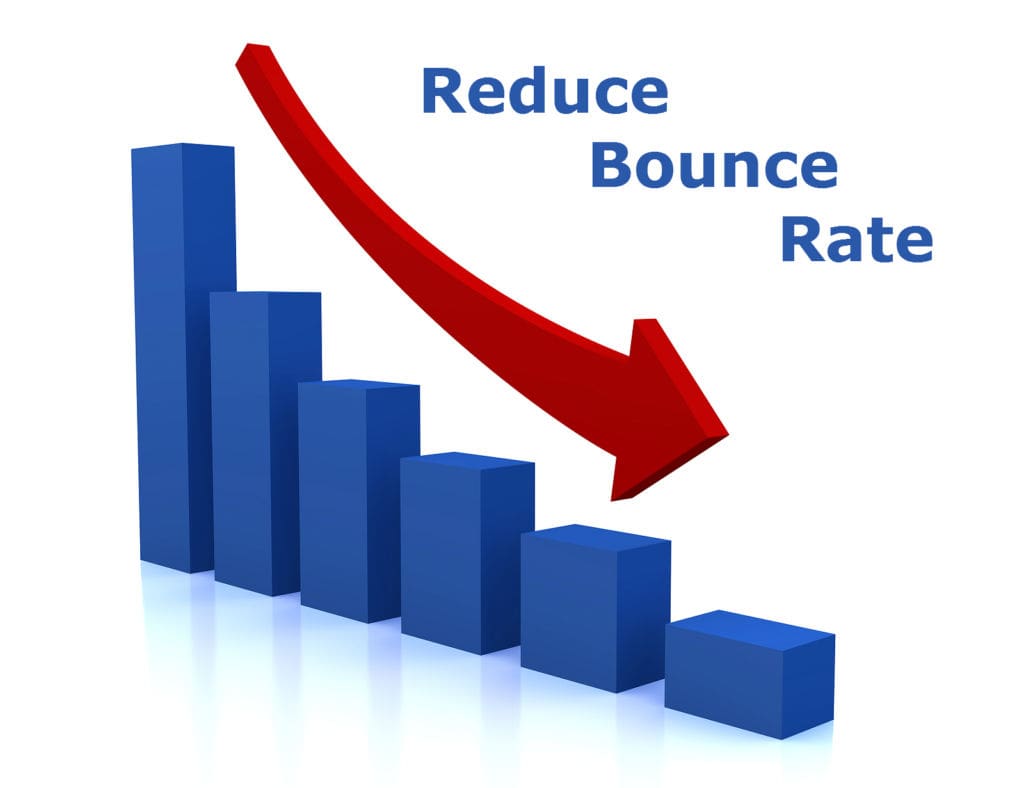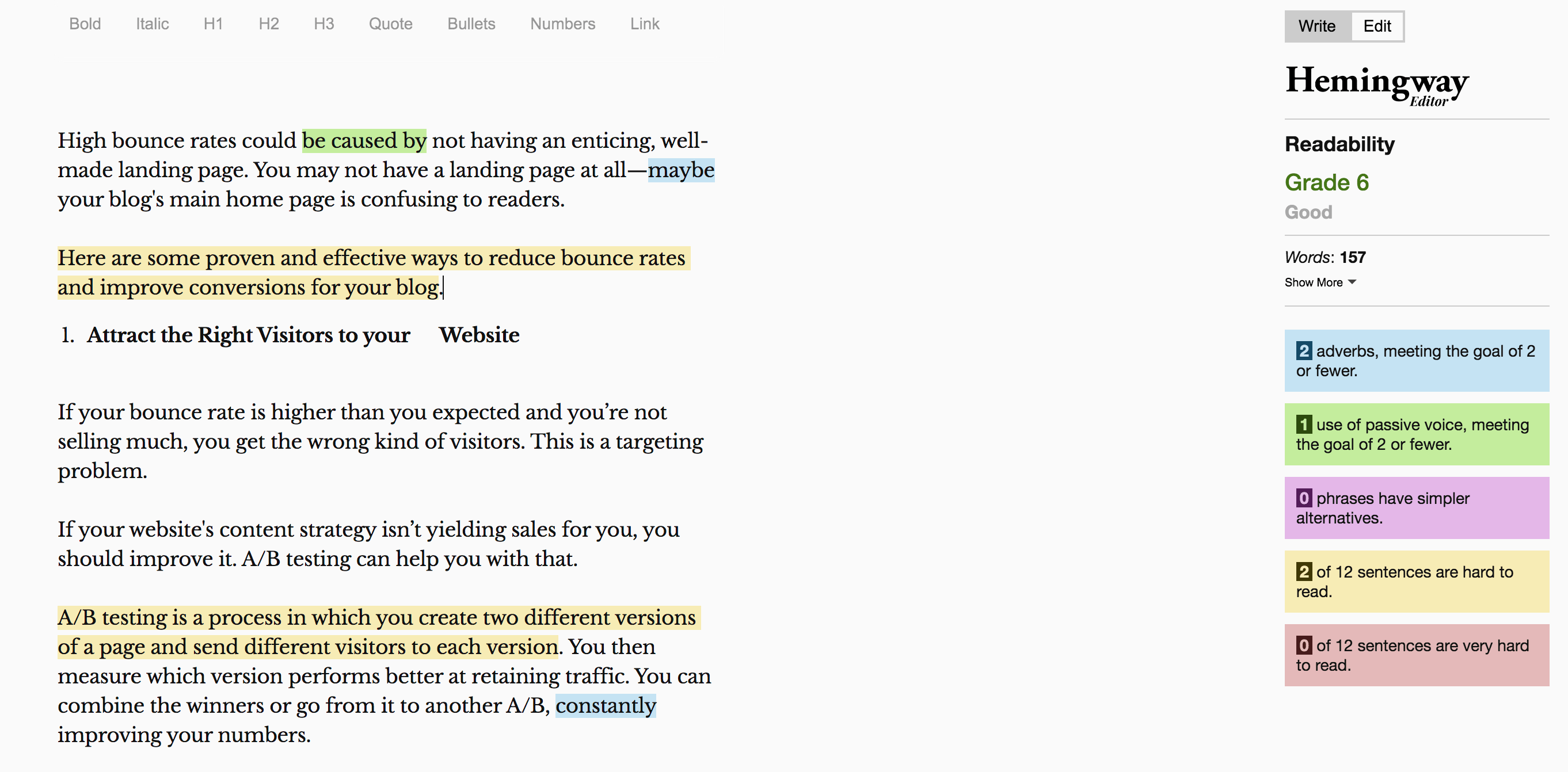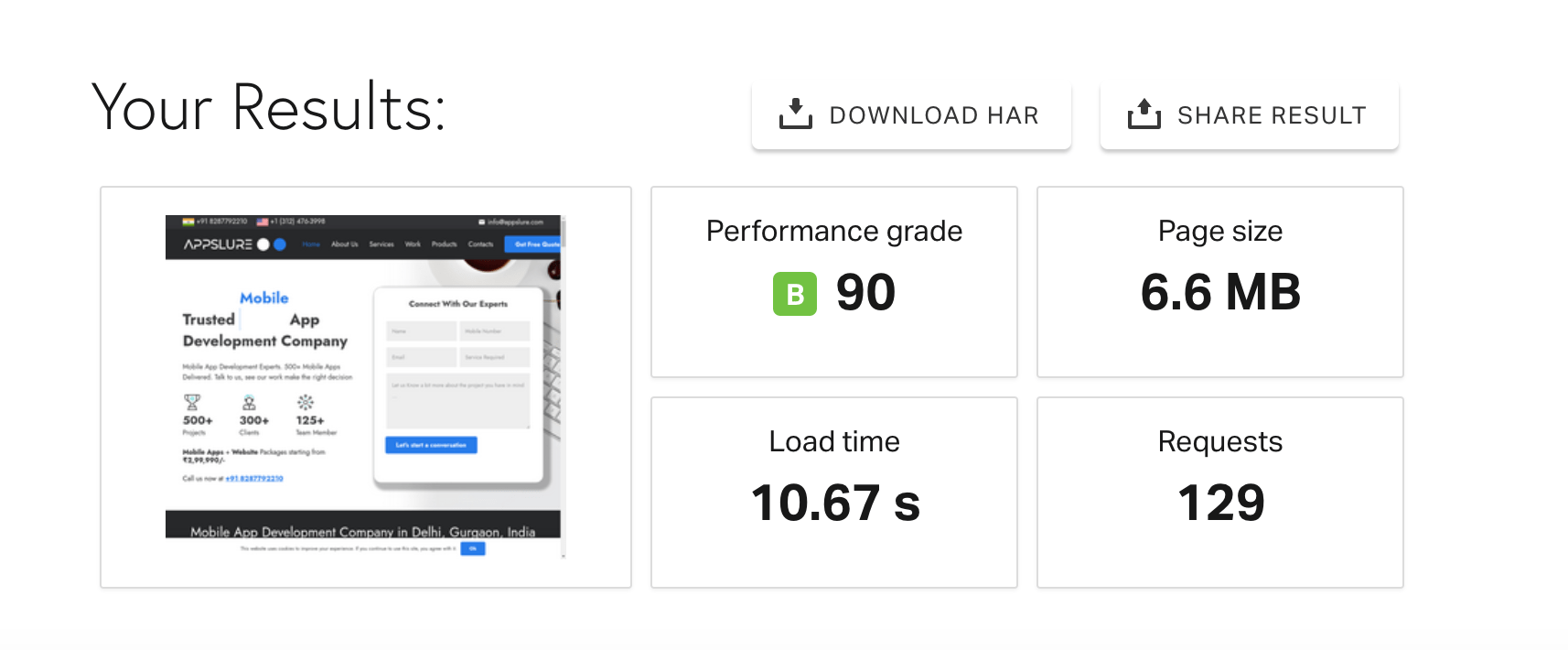Reducing your bounce rate is key to improving your search ranking and increasing your conversion.
However, that’s easier said than done. If you have previously tried to reduce the bounce rate but failed at it, don’t worry – you are not alone. In most cases, it takes time and a lot of trial and error before you achieve results.
What is Bounce Rate?
A website’s bounce rate is important because it helps determine how well people engage (or not) with the content or user experience on a particular page.
Bounce rate is a measure that shows the number of users who bounces out of a website without proceeding to the next step of the funnel, such as buying something or filling out a contact form.
Here are the reasons why Bounce Rate is Crucial for SEO:
Bounce rate is a crucial factor that shows the number of users who visit and stay on your website and those who leave your website.
High bounce rates can affect SEO results, as high bounce rates indicate poor content.
1. A High Bounce Rate Indicates Poor Content
If your bounce rate is high, it could indicate that your landing experience is not meeting user expectations. Ideally, you want your website visitors to engage with your content when they land on your site.
When a user spends more time on your site, they will know more about you and can get more information about your customers and sell more products/services.
If the users bounce back after just visiting one page on your website, that could mean you need to work on making your landing page experience more compelling.
2. A High Bounce Rate Indicates That You’re Attracting The Wrong Traffic
If you have a lot of hard bounces from your website, it might be that confusing ad copy or generic keywords in your marketing campaigns and PPC advertisements that might be attracting non-related traffic to your site.
The visitors will come to know that they are in the wrong place, and they will drop off your website immediately.
If your users do not find value after visiting your website, they will bounce.
As discussed in the next point, Google tracks this behavior and flags your content as irrelevant for that particular keyword, affecting your SEO rankings.
3. It Passively Affects Your Search Engine Rankings
Bounce rate is not one of the Google ranking factors, but it is an indirect one. Specifically, it has been shown to affect several other ranking factors that Google cares about — slow page speed, low-quality design, poor mobile optimization, etc.
Lowering your bounce rate is a great indicator that your content is highly engaging, valuable, and useful for the readers. This could help you place your content on the top of the SERP – aka – Search Engine Results Pages.
“A high time-on-page and low bounce rate indicate that visitors engage with your page,” says Keon Hoffman of Haitna: A Dallas SEO Expert.
4. A High Bounce Rate Indicates Problems In Multiple SEO Factors
It is important to understand that high bounce rates are often symptomatic of deeper issues when calculating bounce rates.
For example, suppose you notice that people who visit your website keep bouncing back without clicking on any links or buying anything.
You might consider improving the site’s navigation and overall search experience. This can be indicative of multiple poor SEO factors, such as:
- Low-quality web page design
- A mismatch between content & keywords
- Poor mobile optimization
- Slow loading speed
You would improve the user experience by fixing these problems, thereby decreasing the bounce rate.
8 Easy Ways to Improve Your Bounce Rate
High bounce rates could be caused by not having an enticing, well-made landing page. You may not have a landing page at all—maybe your blog’s main home page is confusing to readers.
Here are some proven and effective ways to reduce bounce rates and improve conversions for your blog.
1. Attract the Right Traffic to your site
If your website has a higher bounce rate than expected and you’re not selling much, you get the wrong kind of visitors. This is a targeting problem.
If your website’s content strategy isn’t yielding sales, you should improve it by doing A/B testing. It can help you with that.
A/B testing is a process in which you create two-page versions and send different visitors to each version. You then measure which version performs better at retaining traffic. You can combine the winners or go from it to another A/B, constantly improving your numbers.
2. Create a Gripping CTA
Once you’ve caught visitors’ interest with your headline, don’t let them get away! Do not let your page’s exit rate increase. You want every potential purchaser to do something—anything.
To make sure people take action, your call-to-action buttons should be compelling. They should make people want to visit a URL on the other side of the link. If you wish to optimize your call-to-action buttons, change each text to ensure that it correctly describes the traffic to the resource you’re directing traffic.
A good call-to-action button can improve your bounce rate and overall user experience.
3. Create Multiple Landing Pages for High-Volume Keywords
Companies trying to lower their bounce rates often have trouble predicting which pages their visitors will enter their websites and how they’ll behave once they land there.
For example, although your home page may be beautifully designed, it doesn’t necessarily matter if most traffic comes from a blog article that wasn’t optimized for engagement.
In cases like this, landing pages are a great solution. They’re specifically designed to serve as the optimal entry point — with compelling layouts and CTAs.
By creating more landing pages, you can boost your search click-through rate. It’s a numbers game: The more landing pages you have, the better your click-through rate.
First, ensure that your landing pages are easy to navigate. Then link all of them to your homepage. You might even link them to your website’s main navigation menu. People will be less likely to bounce if they find what they need quickly.
4. Work on your UX
Improve your website’s user experience by considering the elements that make up your site. The right UX combines visual design, information, and interactivity that meets your visitor’s expectations and exceeds them.
Think about how your buyer persona would interact with your website, what they want to accomplish when they come to it, and how you can guide them through a satisfying journey. If necessary, revamp the pages on your site to help the UX flow more smoothly.
Moreover, if you want to build a site that attracts many organic visitors over time, limit or avoid using popups, if you want to use them, make sure they are as un-annoying as possible.
5. Improve Your Content’s Readability
When you craft text for your audience, try to keep it short. If you have too much text, it may scare readers away. Some blogs have great content but bad formatting. This makes customers bounce from the site or leave quickly. It also deprives them of the information they’re looking for.
Here are some ideas that will help you to increase the readability of your content:
- Ask your readers questions in your content to encourage them to participate in the conversation instead of just reading what you write.
- You can put your keywords in bold a few times but don’t overdo this.
- End your content with a subheading titled “conclusion” that also offers the reader an action to take at the end of your content.
- Include plenty of charts, images, sidebars, and expert quotes in your content.
- Use subheadings to break up a long, dense paragraph.
For example, Take a look at this content’s readability. You can improve it using the Hemingway app.
6. Keep Your Blog Fresh
Infusing your blog with fresh content will keep it from becoming stale.
Articulate and informative posts are less likely to put readers to sleep than dull rants. But don’t let quantity outweigh quality, or you may scare off potential readers instead of engaging them.
It is important to distinguish powerful content from the right content for your audience—for example, the content they want to read at that particular time.
Content with a wow factor can be enticing, but it won’t necessarily solve your readers’ problems. Actionable content will wow them and give them ideas for implementing their solutions.
7. Speed Up Your Page Load Time
Users expect the website to open in less than 3 seconds. After three seconds, they’ll likely press the back button and go to your competitor’s site. Users are less likely to browse a website that takes longer to load.
For example, take a look at our website page speed. We have a performance grade of 90/100.
Google is concerned about site speed, so your site may lose rankings if consistently slow to load. A slow site will drive away potential customers and keep existing customers from purchasing from you again.
Have you analyzed your website speed? Is it time to improve? If so, don’t wait.
8. Target Keywords With High-Value Traffic
Keywords are important for your content marketing campaign. Suppose you want to improve search performance and target highly competitive keywords, as that’s where the high-value traffic is. It might surprise you to learn that not all keywords are created equal.
Some will bring quality traffic, while others will only keep you waiting for a ride that probably will not come.
High-value keywords are powerful. They boost your site’s traffic, engagement, and conversion rate and enhance your authority and reputation by giving you more credibility.
If the site has a high bounce rate, it will not help you build authority quickly. Instead of writing engaging content, they throw out unhelpful content as fast as possible.
Key Takeaways
Here are some best practices when it comes to bounce rate and its impacts on SEO:
- Create engaging content for your users that generates some value for them. Each visitor should be compensated with information relevant to them.
- Work on the readability of your content.
- Ensure that you are attracting the right people by using the right keywords.
- Provide an impeccable user experience to ensure the visitor won’t leave your site without action.
- Fix the SEO of your website; it will directly reflect a decrease in your bounce rate.
- Ensure that your website has a quick load time.




